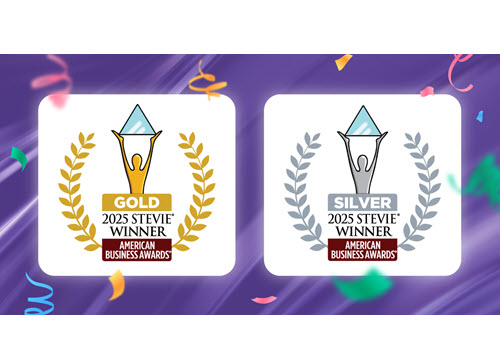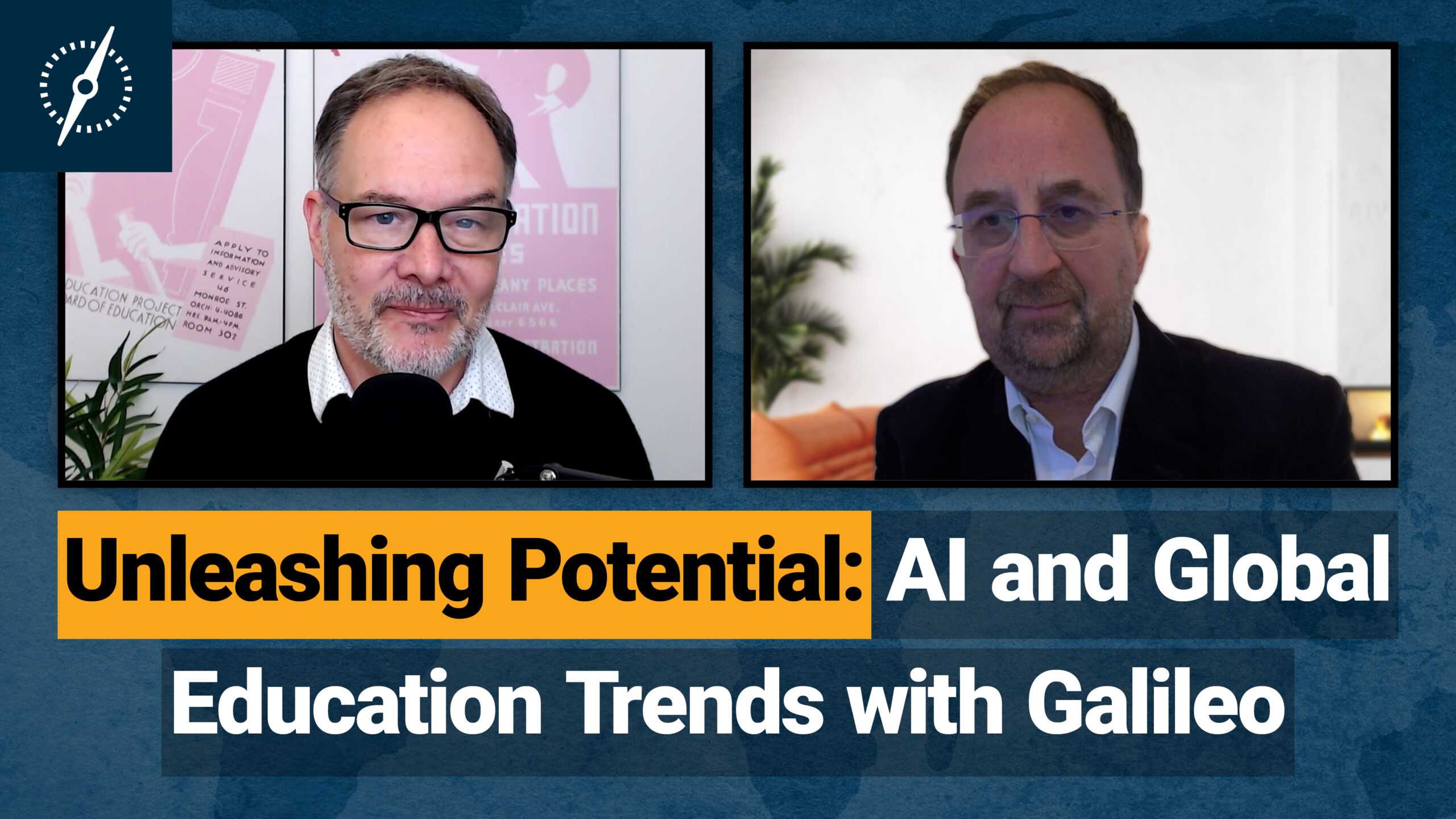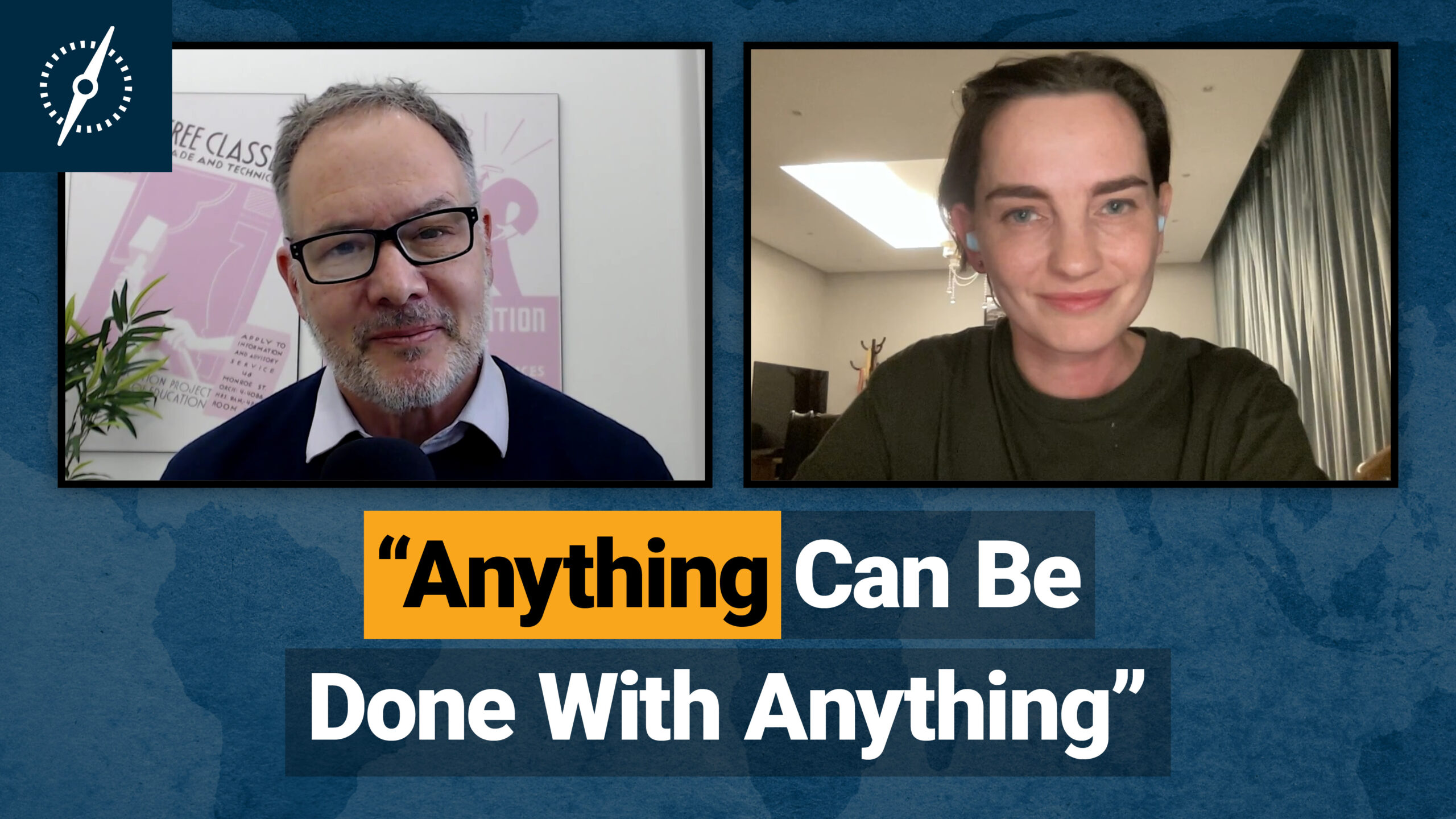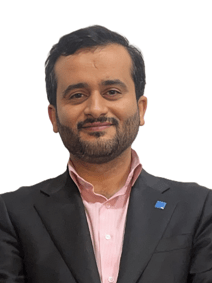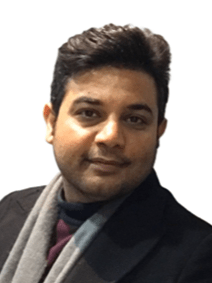One of the biggest, but least remarked upon trends in European higher education in recent years is the growth of private for-profit, higher education. Even in countries where tuition is free, there are hundreds of thousands of students who now prefer to take courses at private for-profit institutions.
To me, the question is, why? What sort of institutions are these anyway? Interestingly, the answer to that second question is one which might confuse my mostly North American audience. Turns out a lot of these private institutions are relatively small, bespoke institutions with very narrow academic specializations. And yet they’re owned by a few very large international conglomerate universities. That’s very different from North America, where institutions tend to be either small and bespoke, or part of a large corporation, but not both.
Today my guest is Nicolas Badré. He’s the Chief Operating Officer of the Galileo Group, which operates a number of universities across Europe. I met him a few months ago at an OECD event in Jakarta. When I heard about some of Galileo’s initiatives, I knew I’d have to have him on the show.
There are three things which I think are most important about this interview. First is the discussion about Galileo’s business model and how it achieves economies of scale across such different types of institutions. Second, there’s how the network goes about collectively learning across all its various institutions. And third, specifically how it’s choosing to experiment with AI across a number of institutions and apply the lessons more globally.
Overall, it’s a fascinating chat. I hope you enjoy it too. But now, let’s turn things over to Nicolas.
The World of Higher Education Podcast
Episode 3.27 | Innovation Without Borders: Galileo’s Networked Approach to Better Higher Education System
Transcript
Alex Usher (AU): Nicolas, Galileo Global Education has grown significantly over the years. I think the group is, if I’m not mistaken, 13 or 14 years old now. Some of the universities it owns might be a bit older, but can you walk us through the origins of the group? How did you grow to be as big as you are? I think you’ve got dozens of institutions in dozens of countries—how did that growth happen so quickly?
Nicolas Badré (NB): Thank you, Alex, for the question. It’s an interesting story. And yes, to your point, the group was created 13 and a half years ago, with an investment by Providence Equity Partners into Istituto Marangoni, a fashion school in Italy. That dates back to 2011. Since then, we’ve made 30 acquisitions.
The growth started primarily in Europe, especially in France and Germany. Then, in 2014, we took our first steps outside of Europe with the acquisition of IEU in Mexico. Significant moves followed in 2018 and 2019, particularly into the online learning space with Studi in France and AKAD in Germany.
There’s been a very rapid acceleration over the past five years. For context, I joined the group at the end of 2019. At that time, Galileo had 67,000 students across nine countries. Today, we have 300,000 students in 20 countries.
Back then, the group was primarily focused on arts and creative schools, as well as business and management schools. Now, we’ve expanded into tech and health, and even into some professional training areas—like truck driving, for instance.
What does this reflect? Two things. First, very strong organic growth from our existing schools and brands. Take ESG in France as an example. It’s been around for 40 years and is a well-known entry-level business school. Over the past five years, it’s diversified considerably creating ESG Luxury, ESG Tourism, you name it. It’s also expanded its physical presence from just a few cities to now being in 15 or 16 cities across France.
So it’s really been a combination of strong organic growth and selective acquisitions that have helped us more than quadruple our student numbers in just five years.
AU: It’s interesting— I think a lot of our listeners and viewers might be surprised to hear about such a strong for-profit institution coming out of France. When you think of French higher education, you think of the Grandes Écoles, you think of free education. So why would so many people choose to pay for education when they don’t have to? It’s a pretty strong trend in France now. I think over 26% of all students in France are in some form of private higher education. What do you offer that makes people willing to give up “free”?
NB: It’s a good question, and you’re right—it’s not just about France. In many places across Europe, including Germany, the Nordics, and others, you see similar dynamics.
That said, yes, in France in particular, there’s been a growing share of private players in higher education over the past few years. That probably reflects the private sector’s greater ability to adapt to new environments.
I’d highlight three main factors that help explain why we’ve been successful in this space.
First, we’re obsessed with employability and skills-based education. And that’s true across all levels and backgrounds. When we worked on our group mission statement, everyone agreed that our mission is to “unleash the potential of everyone for better employability.”
Because of that focus, we maintain very strong ties with industry. That gives us the ability to adapt, create, and update our programs very quickly in response to emerging demands. We know competencies become obsolete faster now, so staying aligned with job market needs is critical. That’s probably the strongest unifying driver across all of Galileo.
Beyond that, we also offer very unique programs. Take Noroff, for example—a tech school in Norway, which is even more tuition-free than France. It’s one of the very few fee-paying institutions in the country. But the program is so strong that students are willing to pay around 15,000 euros a year because they know they’ll get a top-tier, hands-on experience—something that might be slower to evolve in the public system.
So that’s the first point: employability and unique, high-impact programs.
Second, we put a strong emphasis on the student experience. How do we transform their education beyond just delivering content? That’s an area we continue to invest in—never enough, but always pushing. We’re focused on hybridizing disciplines, geographies, and pedagogical approaches.
And we’ve systematized student feedback—not just asking for opinions, but making sure we translate that feedback into tangible improvements in the student experience.
And third, I’d say there’s a values-based dimension to all of this. We focus heavily on innovation, entrepreneurship, and high standards. Those are the core values that we’re driven by. You could say they’re our obsessions—and I think that kind of vision and energy resonates with our students. Those are the three main things I’d point to.
AU: I have a question about how you make things work across such a diverse set of institutions. I mean, you’ve got design schools, drama schools, law schools, medical schools. When people think about private education, there’s often an assumption that there’s some kind of economies of scale in terms of curriculum. The idea that you can reuse curriculum across different places. But my impression is that you can’t do that very much. It seems like you’re managing all these different institutions, each of them like their own boutique operation, with their own specific costs. How do you make it work across a system as large and diverse as yours? Where are the economies of scale?
NB: Well, that’s also a very good point—and you’re absolutely right. We have a very diverse network of schools. We have a culinary arts school in Bordeaux, France, with maybe 400 students, and we have universities with more than 10,000 students, whether in medical or business education.
So yes, you might wonder: why put these institutions together?
The answer is that we really built the group’s development around the entrepreneurial DNA of our school directors. They’re responsible for their own development—for their growth, diversification, and how they respond to the job market.
We’re not obsessed with economies of scale. What we really value is the network itself. What we focus on is shared methodology—in areas like sales and marketing, finance, HR, and student experience.
There are also some opportunities for synergies in systems. In some cases, for instance, yes—we use a similar CRM across several countries. But I think the real value of the network lies in its ability to share experiences and experiment with innovation throughout, and then scale up those innovations appropriately across the other schools.
So I’d say it’s more about shared practices than about forcing economies of scale across borders—because that doesn’t always make sense.
AU: Am I correct in thinking that you don’t necessarily present yourself as a chain of institutions to students? That each institution actually has a pretty strong identity in and of itself—is that right? Is there a fair bit of autonomy and ability to adapt things locally at each of your schools?
NB: Yes, I think that’s true. In terms of branding, we believe that each of our schools generally has a stronger brand than Galileo itself. And that’s how it should be, because each school has its own experience, its own DNA, its own momentum and development.
So, we see ourselves more as a platform that supports the development of all these schools, rather than a chain imposing the same standards and practices across the board.
Of course, we do have certain methodologies—for example, how to run a commercial campaign. We provide guidance, but it’s ultimately up to each school to manage that process and use the methodology in a way that works best for their own development.
That doesn’t mean there’s no value in having the Galileo name—there is. But the value is in being a platform that supports the schools, rather than overshadowing them.
AU: Nicolas, I know Galileo is testing a lot of AI-driven approaches across its various institutions. What I found interesting in a discussion we had offline a few weeks ago is that you’re experimenting with AI in different parts of the institution—some of it around curriculum, some around administration, and some around student services. Can you give us an overview? What exactly are you testing, and what are the goals of these experiments?
NB: I think we first need to frame how we’re using AI, and it’s important to look at our strategy globally. We believe there are three major trends shaping higher education.
First, student expectations are evolving quickly—they’re demanding more flexibility and personalization. Second, there’s a rapid emergence of new competencies, which challenges our ability to adapt and update programs quickly. And third, we need to go beyond boundaries and be agile in how we approach topics, address new skills, and serve diverse learners. These are the three starting points we see as opportunities for Galileo to differentiate itself. Now, we’re not trying to become a leading AI company. Our goal remains to be a recognized leader in education—improving employability and lives. That’s our benchmark.
With that in mind, our AI vision is focused on four areas:
- How do we deliver a unique experience to our students?
- How do we connect educators globally who are trained in and comfortable with AI?
- How do we develop content that can be adapted, localized, translated, and personalized?
- And how do we improve operational productivity?
AI is clearly a powerful tool in all four areas. Let me walk through some of the things we’re doing.
The first area we call AI for Content. We’re using AI to more quickly identify the competencies required by the job market. We use tools that give us a more immediate connection to the market to understand what skills are in demand. Based on that, we design programs that better align with those needs.
Then the next step is about course and content creation. Once we’ve defined the competencies, how do we design the courses, the pedagogical materials? How do we make it easier to localize and adapt that content?
Take Studi, an online university in France with 67,000 students and around 150 different programs. A year ago, it would take them about four months to design a bachelor’s or master’s program. Now, it takes one to two months, depending on the specifics. The cost has been cut in half, and development speed has increased by a factor of two, three, even four in some cases. This also opens up opportunities to make programs more personalized because we can update them much faster.
The second area is AI for Experience. How do we use AI to enhance the student experience?
We’ve embedded AI features in our LMS to personalize quizzes, generate mind maps, and create interactive sessions during classes. We’ve also adapted assessments. For example, in Germany, for the past two years, our online university AKAD has let students choose their own exam dates. That’s based on an AI approach that generates personalized assessments while staying within the requirements of German accreditation bodies. This wouldn’t be possible without AI. The result is higher engagement, faster feedback, and a more personalized learning experience.
Lastly, beyond content and experience, we’re seeing real gains in AI for Operations. In sales and marketing, for example, we now use bots in Italy and Latin America to re-engage “dead” leads—contacting them again, setting up meetings, and redirecting them through the admissions funnel. It’s proven quite efficient, and we’re looking to expand that approach to other schools.
We’re also seeing strong results in tutoring. Take Corndel, a large UK-based school focused on apprenticeships. They’re using AI tools extensively to improve student tracking, tutoring, and weekly progress monitoring.
So, we’re seeing a lot of momentum across all these dimensions—and it’s really picked up speed over the last 18 months.
AU: So, you’ve got a network of institutions, which gives you a lot of little laboratories to experiment with—to try different things. How do you identify best practices? And then how do you scale them across your network?
NB: Well, first of all, we have lots of different pilots. As you’ve understood, we’re quite decentralized, so we don’t have a central innovation team of 50 people imposing innovations across all our schools.
It’s more about scouting and sharing experiences from one school to another. It’s a combination of networks where people share what they’re learning.
Just to name a few, we have a Digital Learning Community—that’s made up of all the people involved in LMS design across our schools. They exchange a lot of insights and experiences.
We also hold regular touchpoints to present what’s happening in AI for content, AI for experience, and AI for operations. We’ve created some shared training paths for schools as well. So there are a lot of initiatives aimed at maximizing sharing, rather than imposing anything top-down. Again, as you pointed out, the schools are extremely diverse—in terms of regulations, size, content, and disciplines. So there’s no universal recipe.
That said, in some cases it’s more about developing a methodology. For example, how do you design and implement a pedagogical chatbot? The experiments we’re running now are very promising for future scale-up, because we’re learning a lot from these developments.
AU: I know that, in a sense, you’ve institutionalized the notion of innovation within the system. I think you’ve recently launched a new master’s program specifically focused on this question—on how to innovate in education systems. Can you tell us a little bit about that?
NB: Yeah, I’m super excited to talk about this, because it’s where I’m focusing most of my energy these days.
We’ve been working on this project for a year with four Galileo institutions. It’s called Copernia, and the name, like Galileo, is intentional—these are people who changed perspectives. That’s exactly what we want to do: change the perspective on education and truly put the student at the center.
Copernia started the initiative, Galileo confirmed it, and it’s no coincidence we’re focusing on this.
The first program we’re launching under Copernia is a Master of Innovation and Technology for Education. The idea is to bring together and leverage expertise from several fields: neurocognitive science, tech, AI and data, educational sciences, innovation, design, and management. The goal is to offer students a unique experience where they not only learn about innovation—but also learn to develop and apply it.
One of the major assets we want to leverage is the Galileo network. With over 120 campuses, we can offer students real, hands-on opportunities to experiment and innovate. So the value proposition is: if you want to design and test educational innovation, we’ll give you the tools, the foundational knowledge, and, most importantly, the chance to apply that in practice—within our network, with our partners, and with other institutions.
The goal is to help the whole ecosystem benefit—not just from Galileo’s environment, but also from the contributions of tech partners, academic collaborators, and business partners around the world. I’m convinced this will be a major tool to develop, share, and scale practical, applied innovation.
And importantly, this isn’t meant to be just an internal initiative for Galileo. It’s designed to be open. We want to train people who can help transform education—not only in higher education, but also in K–12 and lifelong learning. Because we believe this kind of cross-disciplinary expertise and hands-on innovation experience is valuable across the entire education sector.
AU: I’m really impressed with the scale and speed at which you’re able to experiment. But it did make me wonder—why can’t public higher education systems do the same? I mean, if I think about French universities, there are 70 or 80 in the public system—though it’s hard to keep track because they keep merging. But theoretically, they could do this too, couldn’t they? It’s a moderately centralized system, and there’s no reason institutions couldn’t collaborate in ways that let them identify useful innovations—rolling them out at different speeds in different areas, depending on what works. Why can’t the public sector innovate like that?
NB: First of all, I wouldn’t make a sweeping judgment on this. I think there is innovation happening everywhere—including within public institutions. So I wouldn’t describe it in black-and-white terms.
That said, it’s true that as a private organization, we face a certain kind of pressure. We need to prove that we operate a sustainable model—and we need to prove that every month. In other words, we rely on ourselves to develop, to test, and to optimize how we grow.
The second is that we have an asset in being able to test and learn in very different environments. Take the example I mentioned earlier, about Germany and the anytime online assessments. We were able to implement that model there because it was online and because the regulatory environment allowed it.
Now, when we approach accreditation bodies in other countries, we can say: “Look, it works. It’s already accepted elsewhere. Why not consider it here?” That ability to move between different contexts—academic and professional, vocational and executive—is really valuable. It allows us to promote solutions that cross traditional boundaries.
That’s not something all public universities can do—and frankly, not something all universities can do, period. But it’s an advantage we’ve built over the past several years by creating this large field for experimentation.
AU: Nicolas, thank you so much for being with us today.
NB: Alex, thank you very much. It’s been a pleasure.
AU: It just remains for me to thank our excellent producers, Tiffany MacLennan and Sam Pufek, and to thank you—our viewers, listeners, and readers—for joining us. If you have any questions about today’s podcast, please don’t hesitate to get in touch at [email protected]. And don’t forget—never miss an episode of The World of Higher Education Podcast. Head over to YouTube and subscribe to our channel. Join us next week when our guest will be Noel Baldwin, CEO of the Future Skills Centre here in Canada. He’ll be joining us to talk about the Programme for the International Assessment of Adult Competencies. See you then.
*This podcast transcript was generated using an AI transcription service with limited editing. Please forgive any errors made through this service. Please note, the views and opinions expressed in each episode are those of the individual contributors, and do not necessarily reflect those of the podcast host and team, or our sponsors.
This episode is sponsored by Studiosity. Student success, at scale – with an evidence-based ROI of 4.4x return for universities and colleges. Because Studiosity is AI for Learning — not corrections – to develop critical thinking, agency, and retention — empowering educators with learning insight. For future-ready graduates — and for future-ready institutions. Learn more at studiosity.com.



